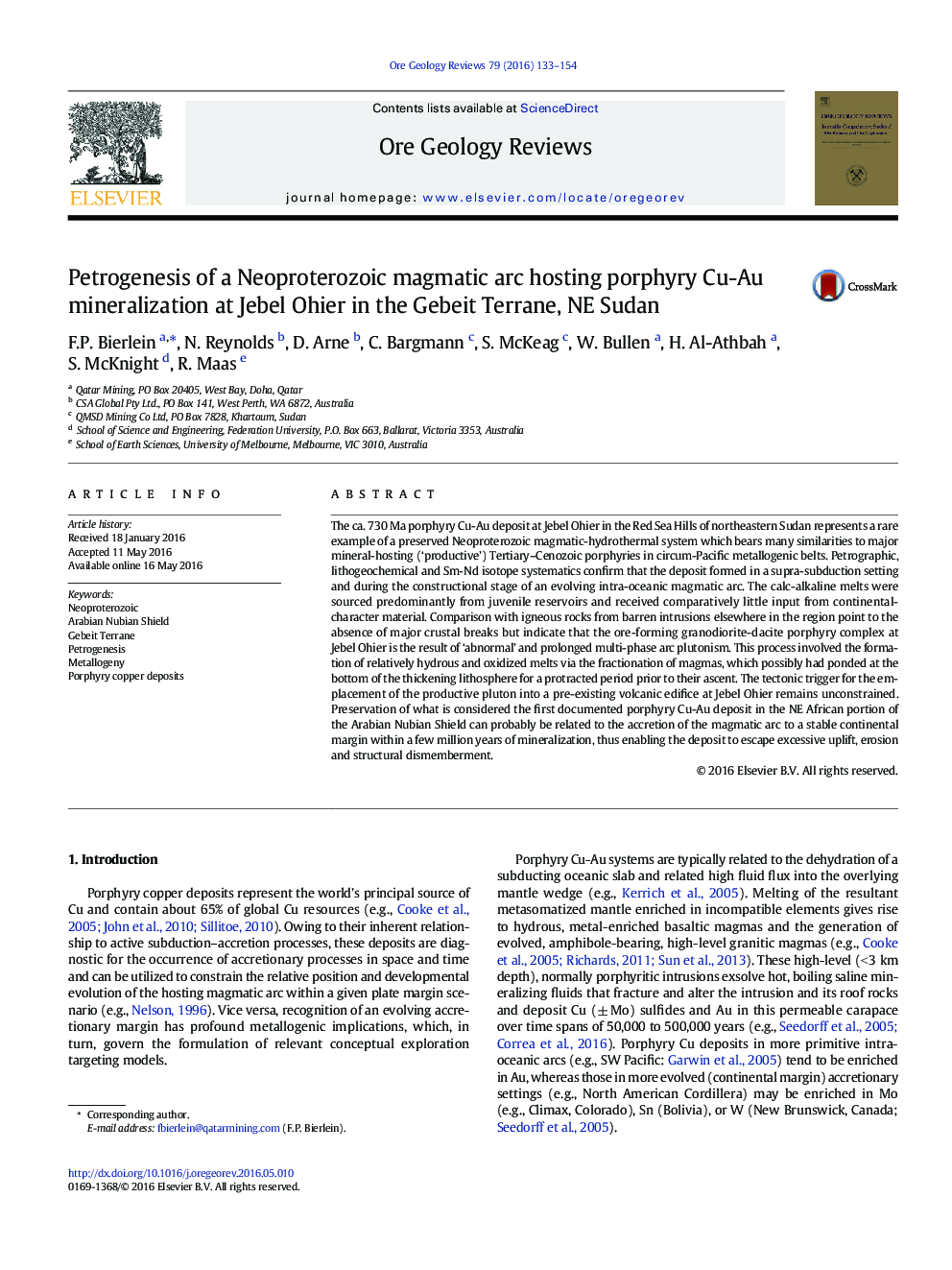| Article ID | Journal | Published Year | Pages | File Type |
|---|---|---|---|---|
| 4696790 | Ore Geology Reviews | 2016 | 22 Pages |
•Newly discovered porphyry Cu-Au deposit in the Neoproterozoic Red Sea Hills of northeastern Sudan•System represents first documented porphyry Cu-Au deposit in the NE African portion of the Arabian Nubian Shield•Bears similarities to major ‘productive’ Tertiary – Cenozoic porphyries in circum-Pacific metallogenic belts•Deposit formed in supra-subduction setting and during constructional stage of an evolving intra-oceanic magmatic arc•Ore-forming granodiorite-dacite porphyry complex at Jebel Ohier result of ‘abnormal’, prolonged multi-phase arc plutonism
The ca. 730 Ma porphyry Cu-Au deposit at Jebel Ohier in the Red Sea Hills of northeastern Sudan represents a rare example of a preserved Neoproterozoic magmatic-hydrothermal system which bears many similarities to major mineral-hosting (‘productive’) Tertiary–Cenozoic porphyries in circum-Pacific metallogenic belts. Petrographic, lithogeochemical and Sm-Nd isotope systematics confirm that the deposit formed in a supra-subduction setting and during the constructional stage of an evolving intra-oceanic magmatic arc. The calc-alkaline melts were sourced predominantly from juvenile reservoirs and received comparatively little input from continental-character material. Comparison with igneous rocks from barren intrusions elsewhere in the region point to the absence of major crustal breaks but indicate that the ore-forming granodiorite-dacite porphyry complex at Jebel Ohier is the result of ‘abnormal’ and prolonged multi-phase arc plutonism. This process involved the formation of relatively hydrous and oxidized melts via the fractionation of magmas, which possibly had ponded at the bottom of the thickening lithosphere for a protracted period prior to their ascent. The tectonic trigger for the emplacement of the productive pluton into a pre-existing volcanic edifice at Jebel Ohier remains unconstrained. Preservation of what is considered the first documented porphyry Cu-Au deposit in the NE African portion of the Arabian Nubian Shield can probably be related to the accretion of the magmatic arc to a stable continental margin within a few million years of mineralization, thus enabling the deposit to escape excessive uplift, erosion and structural dismemberment.
